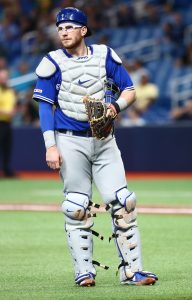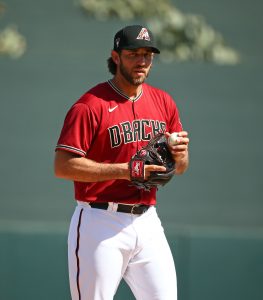Dave Stewart’s transition from agent to Diamondbacks general manager was both brief and frenetic. Not afraid to make moves that bucked industry trends, Stewart’s regime aggressively moved young talent for veterans, seemingly placed a lower value on draft picks than other clubs and made what proved to be a pair of high-profile missteps on the international market as they set out on a clear win-now path.
In 2016, the Diamondbacks marketed an “evolutionary” year for the franchise following an offseason that was headlined by their stunning signing of Zack Greinke to a six-year, $206.5MM deal. That 2016 campaign did prove to be a major turning point for the organization, although surely not in the manner the front office had hoped; Arizona finished out the year with a 69-93 record that led to a swift front office overhaul and the dismissal of manager Chip Hale.
Here’s a look back at the two years of hectic wheeling and dealing under the watch of Stewart, Tony La Russa and De Jon Watson…
2014-15 Offseason
- Acquired RHP Jeremy Hellickson from the Rays in exchange for OF Justin Williams and SS Andrew Velazquez
- Acquired LHP Robbie Ray and 2B/SS Domingo Leyba from the Tigers in a three-team trade that sent SS Didi Gregorius from D-backs to Yankees and RHP Shane Greene from Yankees to Tigers
- Acquired RHPs Zack Godley and Jeferson Mejia from the Cubs in exchange for C Miguel Montero
- Acquired RHPs Rubby De La Rosa and Allen Webster and INF Raymel Flores from the Red Sox in exchange for LHP Wade Miley
- Acquired RHP Myles Smith from the Red Sox in exchange for RHP Zeke Spruill
- Acquired OFs Josh Elander and Victor Reyes and cash from the Braves in exchange for RHP Trevor Cahill and a Competitive Balance Round B pick (announced as two separate deals on April 2 and April 6, as competitive balance picks couldn’t technically be swapped until after Opening Day)
2015 Season
- Acquired C Welington Castillo, RHP Dominic Leone, OF Gabby Guerrero and INF Jack Reinheimer from the Mariners in exchange for 1B/OF Mark Trumbo and LHP Vidal Nuno
- Acquired SS Phil Gosselin from the Braves in exchange for RHP Touki Toussaint and RHP Bronson Arroyo (the Braves effectively purchased Toussaint by taking on the remainder of the injured Arroyo’s contract)
- Acquired SS Dawel Lugo from the Blue Jays in exchange for INF Cliff Pennington
- Acquired LHP Junior Garcia from the Astros in exchange for LHP Oliver Perez
- Acquired RHPs Matt Koch and Miller Diaz from the Mets in exchange for RHP Addison Reed
2015-16 Offseason
- Acquired C/OF Chris Herrmann from the Twins in exchange for OF Daniel Palka
- Acquired RHP Sam McWilliams from the Phillies in exchange for RHP Jeremy Hellickson
- Acquired RHP Shelby Miller and LHP Gabe Speier from the Braves in exchange for SS Dansby Swanson, OF Ender Inciarte and RHP Aaron Blair
- Acquired SS Jean Segura and RHP Tyler Wagner from the Brewers in exchange for RHP Chase Anderson, 2B Aaron Hill, 2B Isan Diaz and $5.5MM
2016 Season
- Acquired INF Luis Alejandro Basabe and RHP Jose Almonte from the Red Sox in exchange for Brad Ziegler
- Acquired RHP Vicente Campos from the Yankees in exchange for RHP Tyler Clippard
- Acquired OF Jason Heinrich from the Orioles in exchange for OF Michael Bourn
—
How would you grade Stewart’s swaps as general manager in Arizona? (Link to poll for Trade Rumors mobile app users.)
Curious to look back on additional GMs and their trade histories?
We’ve already polled on Diamondbacks GM Mike Hazen, recently fired Astros president Jeff Luhnow, Brewers president of baseball ops David Stearns, Angels GM Billy Eppler, Rockies GM Jeff Bridich, Tigers GM Al Avila, Braves GM Alex Anthopoulos, Blue Jays GM Ross Atkins, Mariners GM Jerry Dipoto, Phillies GM Matt Klentak, Padres GM A.J. Preller, Dodgers president of baseball operations Andrew Friedman, Rays GM Erik Neander, ex-Red Sox front office leader Dave Dombrowski, Mets GM Brodie Van Wagenen, Reds GM Dick Williams and Orioles GM Mike Elias.


